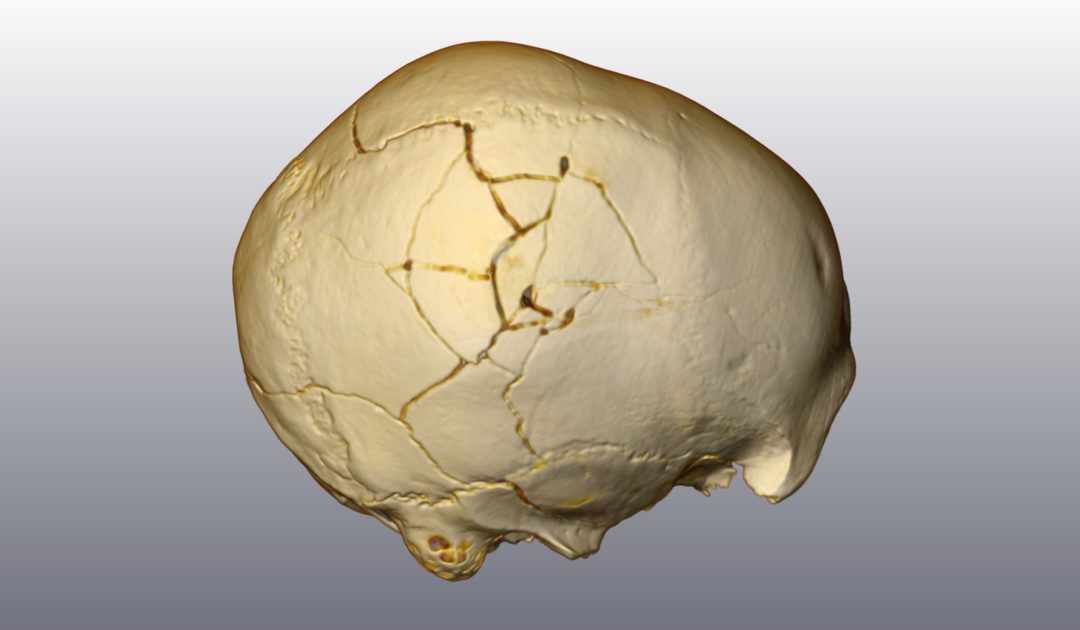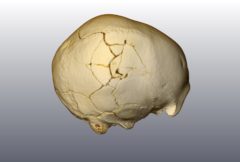30,000-Year-Old Murder Solved
Earliest modern European fell victim to an act of violence
Together with international colleagues, Senckenberg scientist Katerina Harvati was able to uncover an ancient act of violence. Using the latest forensic methods, the scientific team examined the skull of a 33,000-year-old early modern human. The Paleolithic fossil came from the Romanian Cioclovina Cave and is considered one of the oldest representatives of modern Europeans. The fossil’s skull shows multiple injuries that had been interpreted as post-mortem artifacts until now. In their study – published today in the scientific journal “PLOS ONE” – Harvati and her team reveal that these fractures were caused by an act of violence and likely led to the individual’s death.
Two small scars and a larger fracture run across the 33,000-year-old early hominid skull that was found in the Cioclovina Cave in Romania. “It was previously assumed that these cracks occurred after death as a result of weathering processes,” explains Prof. Dr. Katerina Harvati of the Senckenberg Centre for Human Evolution and Palaeoenvironment at the University of Tübingen, and she continues, “We now used modern forensic methods to examine the male fossil and can definitely exclude a post-mortem origin of these fractures.”
Instead, Harvati and her colleagues, Dr. Elena F. Kranioti from the University of Crete and Prof. Dr. Dan Grigorescu from the University of Bucharest, concluded that the fossil representative of the earliest modern humans in Europe fell victim to an act of violence. “Both our forensic bone trauma analysis as well as experimental models show that the fractures were caused by two incidents involving blunt force – the second fracture was clearly inflicted with a club-like object!” The extent of the injuries and the lack of any indications of healing suggest a blow with fatal consequences.
The team around the scientist from Tübingen is even able to provide information about the attacker and the actual event. The fracture’s pattern indicates that the victim and attacker were standing face to face and that the blow was inflicted with the left hand. “It is also possible that the victim was in a kneeling position when he was hit with some type of club,” explains Kranioti, a forensic anthropologist at the University of Crete, and she adds, “We assume this was a personal conflict that ended in violence and, most likely, death.”
The Upper Paleolithic period is known for technological innovation, cultural complexity, and an increase in symbolic behavior. “However, our results show that the behavior of the earliest modern Europeans also included violent conflicts and even murder,” states Harvati in closing.
Publication
Elena F. Kranioti, Dan Grigorescu, Katerina Harvati (2019): STATE OF THE ART FORENSIC TECHNIQUES REVEAL EVIDENCE OF INTERPERSONAL VIOLENCE CA 30.000 YEARS AGO.
https://journals.plos.org/plosone/article?id=10.1371/journal.pone.0216718

